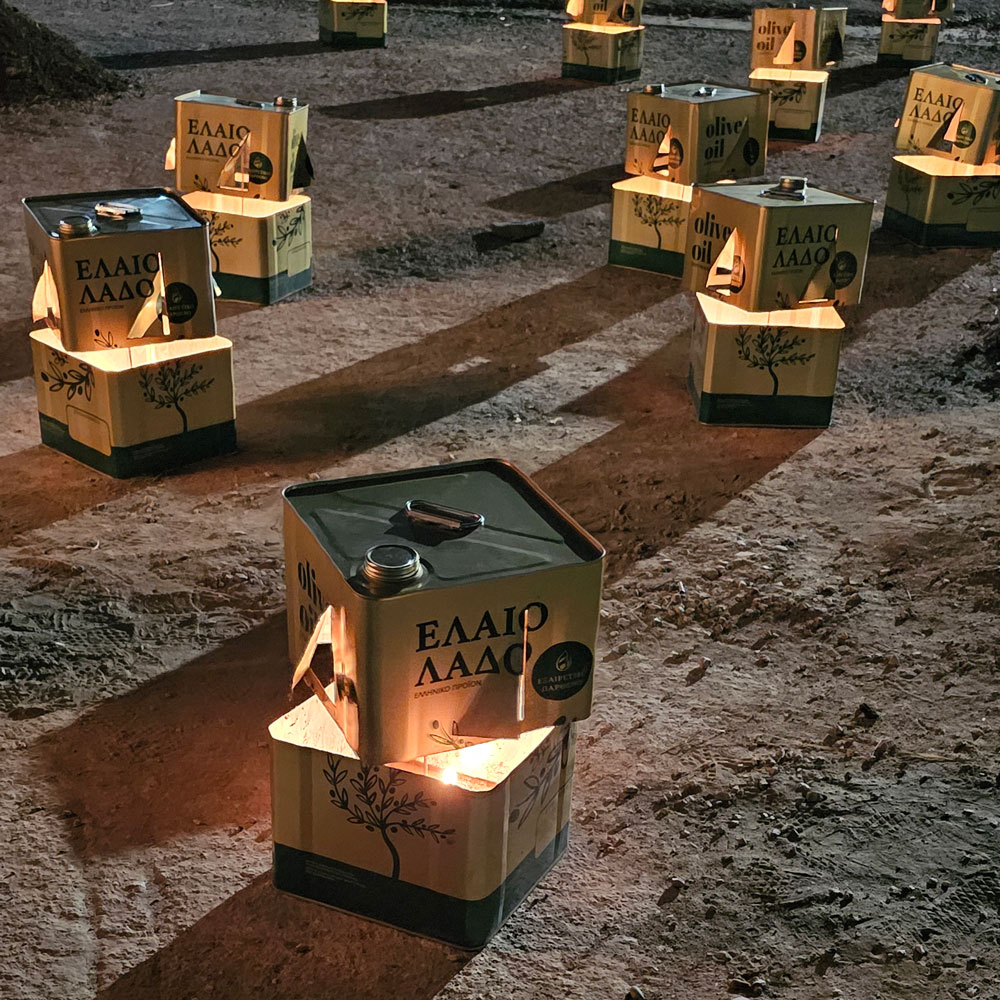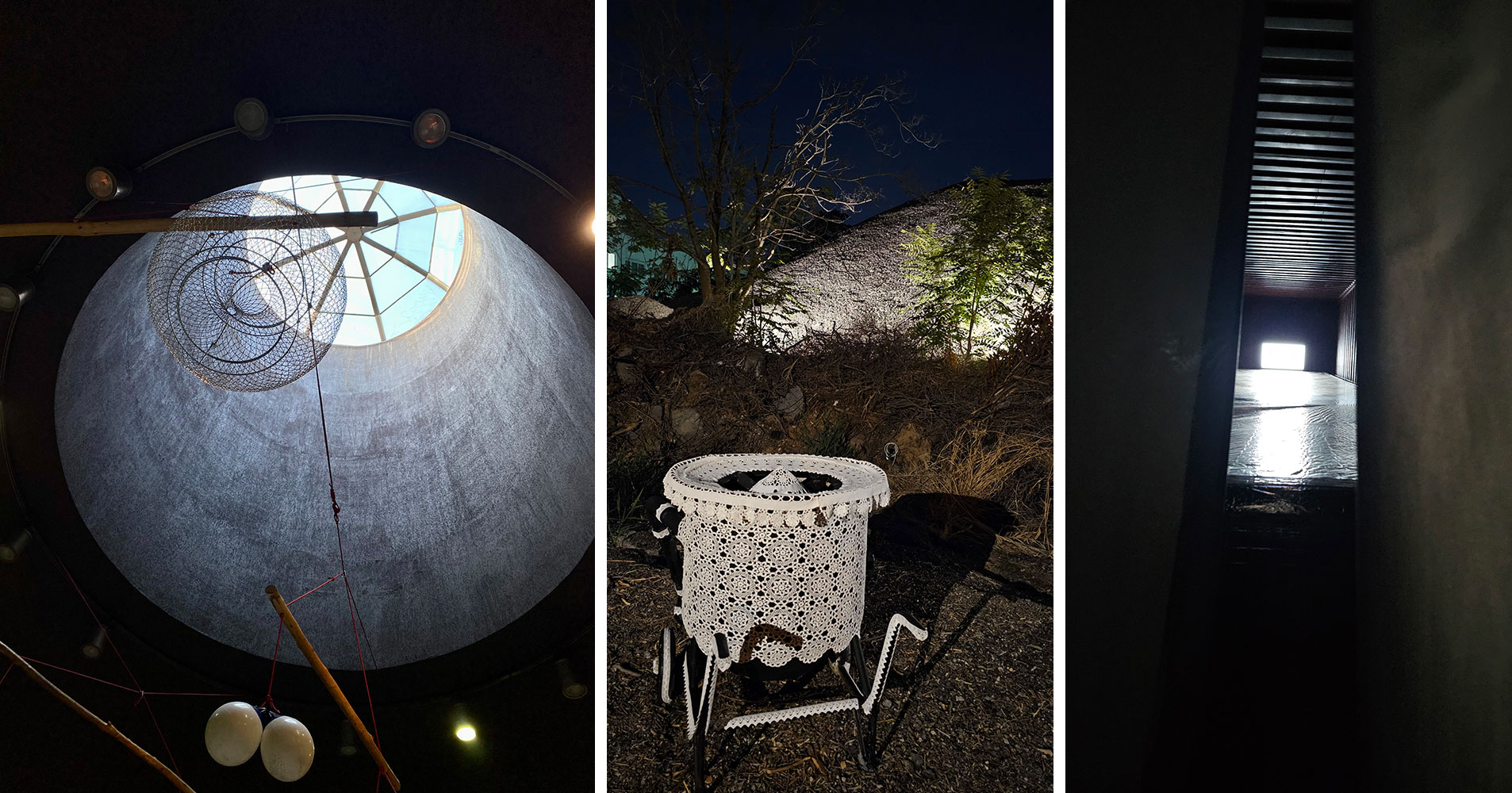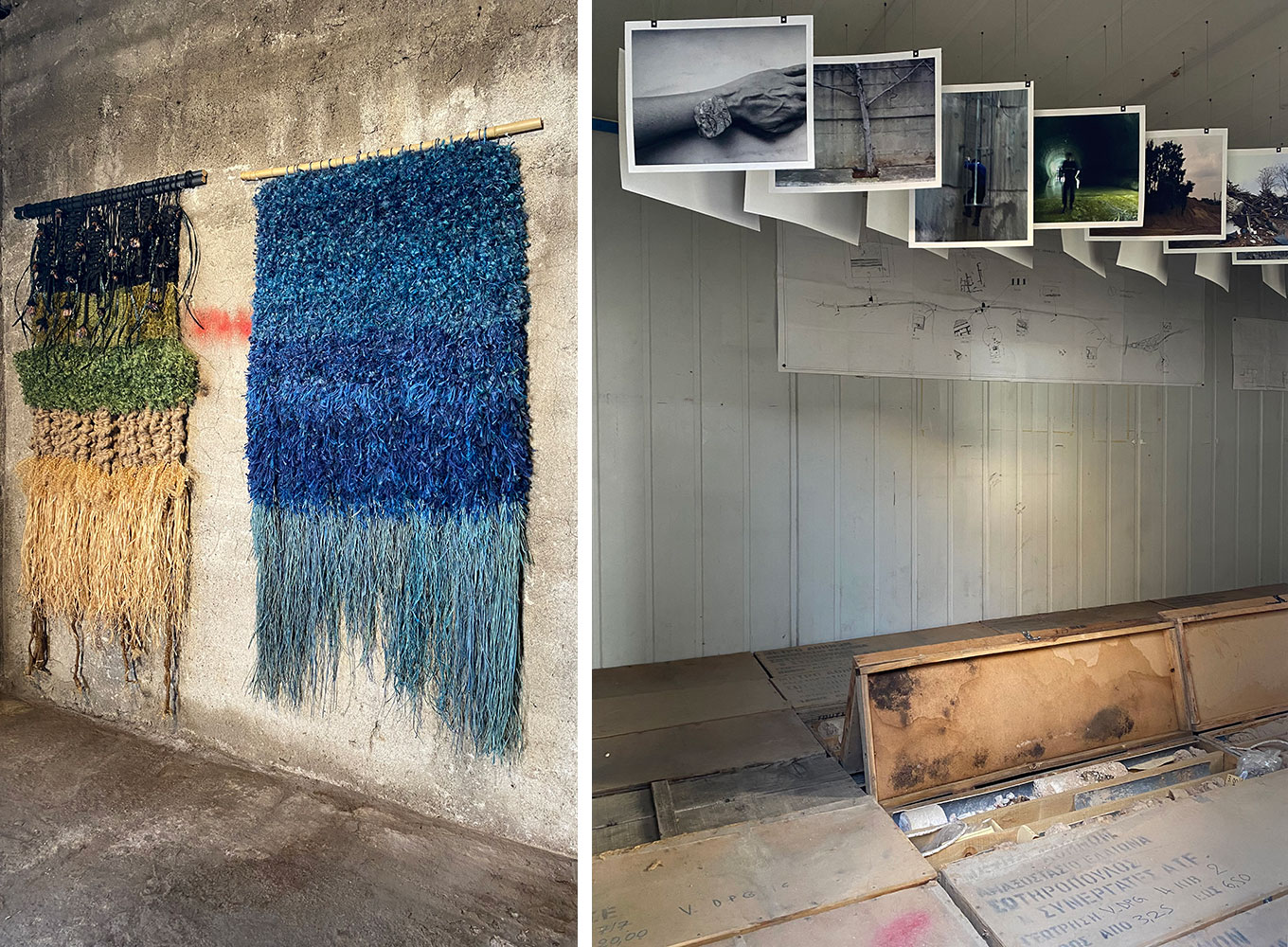ART CITIES: Athens-Eleonas ’23, Chthonic and Anthropocene
 Earth’s history is divided into a hierarchical series of smaller chunks of time, referred to as the geologic time scale. These divisions, in descending length of time, are called eons, eras, periods, epochs, and ages. Officially, the current epoch is called the Holocene, which began 11,700 years ago after the last major ice age. However, the Anthropocene Epoch is an unofficial unit of geologic time, used to describe the most recent period in Earth’s history when human activity started to have a significant impact on the planet’s climate and ecosystems. The word Anthropocene is derived from the Greek words anthropos, for “man,” and cene for “new,” coined and made popular by biologist Eugene Stormer and chemist Paul Crutzen in 2000.
Earth’s history is divided into a hierarchical series of smaller chunks of time, referred to as the geologic time scale. These divisions, in descending length of time, are called eons, eras, periods, epochs, and ages. Officially, the current epoch is called the Holocene, which began 11,700 years ago after the last major ice age. However, the Anthropocene Epoch is an unofficial unit of geologic time, used to describe the most recent period in Earth’s history when human activity started to have a significant impact on the planet’s climate and ecosystems. The word Anthropocene is derived from the Greek words anthropos, for “man,” and cene for “new,” coined and made popular by biologist Eugene Stormer and chemist Paul Crutzen in 2000.
By Dimitris Lempesis
Photo: Dimitris Trikas Archive
The exhibition “Eleonas ’23 – Chthonic and Anthropocene” hosts the works of 48 artists, accompanied by a rich public program, performances, and other activities. It focuses on the Chthonic element and the Anthropocene era, exploring their conflict and dialogue within the Eleonas* area, which serves as both the field of study and the point of reference. The exhibition aims to highlight the critical and complex situations arising from the ongoing dialogue and conflict between Nature and Man. These polarities dominate the region due to the profound human imprint, and the exhibition delves into the relationship between the past and the present, and vice versa. Eleonas, once renowned during Peisistratus, evolved over time due to human choices, transforming from fertile agricultural land into barren wasteland by the 1960s, a consequence of anarchic industrialization. The Chthonic and Archeological aspects are showcased with the fertility of the soil and the ritual dimension of the Iera Odos path of mysteries. Simultaneously, the Anthropocene era is depicted through human activity’s reflection in the political and economic development of the region. This chronological journey reveals the destructive consequences on nature and the landscape, left by the human footprint. It raises the critical question regarding the present and the future of the region, and beyond: “What should we do now?” In the urban area, where Marconi Street intersects Iera Odos street, serving as the “border” between the Municipality of Athens and the Municipality of Aigaleo, you’ll find several noteworthy features. These include the archaeological site with the foundations of the ancient Kifissos bridge, Eleonas Metro Station, containers, and warehouses situated in an adjacent STA.SY plot, all of which date back to the excavation period and the extension of Metro Line 3. Additionally, there’s the “Souzy Tros” space by Maria Papadimitriou and the Marconi neighborhood, which stands out as a unique social enclave within the vicinity. These spaces are also exhibition spaces. The participating artists, performances, and public program will engage in discussions about contemporary art. They draw upon archeological and photographic materials from Mania Benisi and Maria Papadimitriou, sourced from the broader area.
Participating Artists: Dimitris Alitheinos, Dimitris Ameladiotis, Avgoustos Veinoglou, Mpampis Venetopoulos, Dimitris Georgakopoulos, Giorgos Giparakis, Collectif MASI, Campus Novel, Stella Dimitrakopoulou, Martha Dimitropoulou, VIII Painting Workshop ASFA, Giorgos Zampoulakis with Chryssa Karousi, Anastasia Kiritsi, Vasiliki Lentza, Georgia Milona and Asimina Christopoulou, Theodoros Zafeiropoulos, Vasia Zorbali, Capten, Michail Karikis, Katerina Katsifaraki, Dimitris Kontodimos, Zisis Kotionis, Alex Loyloydis, Nikos Moschos, Pandora Mouriki, Mania Benissi, Dafni Nitsou, Maria Ikonomopoulou, Maria Papadimitriou, Nikos Papadimitriou, Myrto Papadopoulou, Eleni Panouklia, Kostas Pappas, Vivi Perysinaki, Lea Roussopoulou, Vasilis Skylakos, Marios Spiliopoulos, Danai Stratou, Stefania Strouza, Savvas Stroubos with Elli Igliz, Theodoros Terzopoulos, Tassos Triantafyllou, Giorgos Tsakiris, Giorgos Tserionis, Filippos Tsitsopoulos, Ehsan Fardjadinya, Marios Fournaris, magazine FRMK, Pantelis Handris, Vivetta Christouli, Dionisis Christofilogiannis.
* Elaionas is a neighborhood in Central Athens, Greece. It is an industrial area and one of the most deprived areas of the municipality of Athens. The area was named for the fact that in antiquity it was covered in an abundance of olive trees, a feature that it retains even today but to a smaller extent. Today, Elaionas is an area consisting of generally unregulated buildings, with many abandoned craft industry buildings, some actively polluting companies, vacant or unused land and few inhabitants.
Photo: Painting Workshop VIII of Athens School of Fine Arts, Dimitris Trikas Archive
Info: Curator: Dimitris Trikas, Locations: Internal Spaces Of Eleonas Metro Station; Metro Construction Site – Space Sta.Sy Marconi 3; Ancient Bridge On Kifissos River, Eleonas Metro Station; Marconi Neighborhood, On Marconi & Madaron Streets; Construction Site B – Entrance From Marconi Neighborhood, Duration: 29/9-3/12/2023, Days & Hours: Fri-Sun 14:30 – 20:30

Right: Dionisis Christofilogiannis & Goumas, Courtesy Dimitris Trikas


Right: Eleonas ’23 – Chthonic and Anthropocene Installation view, Courtesy Dimitris Trikas

Center: Dionisis Christofilogiannis, Courtesy Dimitris Trikas, Courtesy Dimitris Trikas
Right: Pantelis Handris, Courtesy Dimitris Trikas

Right: Mania Benissi Courtesy Dimitris Trikas
